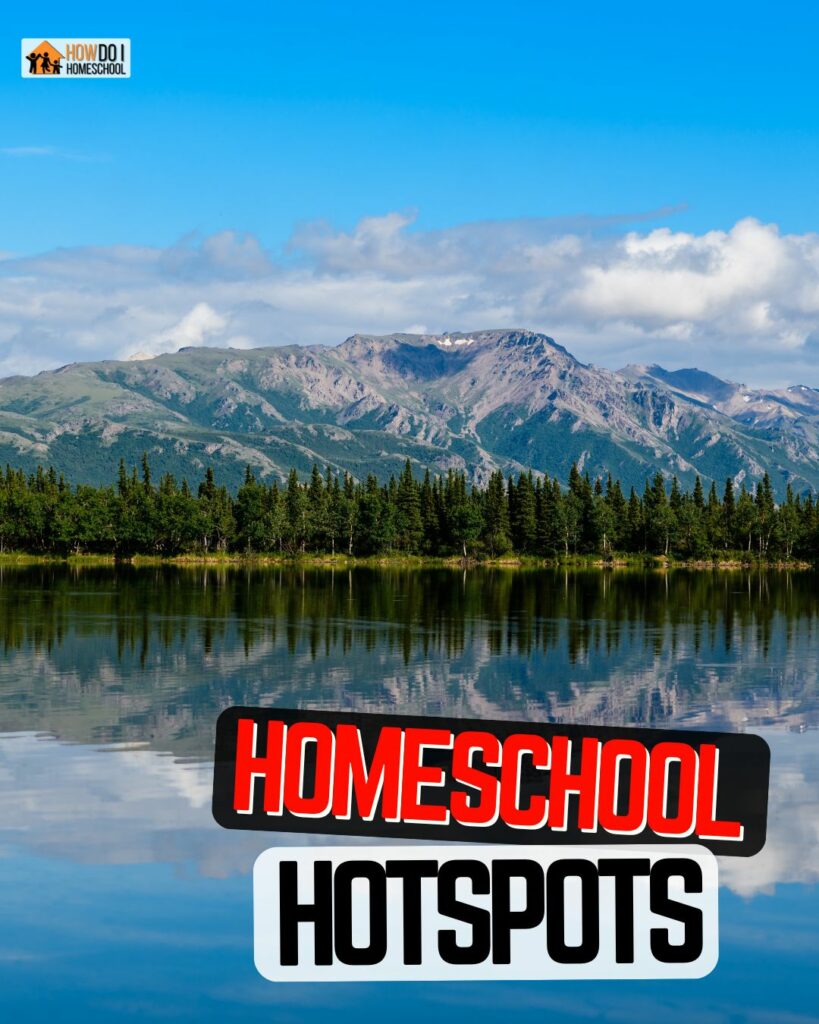The immense diversity of the USA offers a treasure trove of educational opportunities, especially for homeschooled students. Engaging in field trips to distinct destinations like Alaska’s wild landscapes, Arizona’s geological wonder, Colorado’s rocky mountains, New Mexico’s vibrant cultural blend, and Hawaii’s tropical splendor is not just an eye-opening adventure. It’s a crucial part of their learning journey.

I hope you enjoy reading this blog post. If you want to do my course on how to homeschool, click here.
These locations–each unique in its natural beauty and cultural richness–deliver valuable, hands-on learning experiences that seamlessly extend the classroom to the great outdoors.
This embrace of experiential learning forms the heart of homeschooling, transforming education into a creative, engaging exploration of the world.

By Charolette Danzig
New Mexico’s Cultural and Ecological Lessons for Homeschoolers
New Mexico presents a vibrant blend of educational opportunities making it a prime spot for a homeschool field trip. One of the unique experiences this ‘Land of Enchantment’ provides is an immersive lesson in cultural diversity.
The state’s rich history, reflected in its native pueblo structures and Spanish colonial architecture, unravels distinct chapters of Native American, Hispanic and Anglo cultures – a layered education in American history that transcends conventional classroom instruction at home.
The second standout learning opportunity lies in New Mexico’s rich environment. The Rio Grande’s riverside forest or ‘bosque’ and the rare white gypsum dunes at the White Sands National Park provide students with unique ecological perspectives.
These firsthand encounters with diverse ecosystems, replete with hundreds of bird species (such as the Roadrunner–which is also the state bird, the Red-tailed hawk, the Steller’s jay, the American robin, and the western meadowlark–among others), and desert adaptations, impart invaluable lessons in ornithology and desert biology which simply cannot be replicated within the confines of a home classroom.
This is where textbook teachings come vividly alive, fostering a deeper appreciation and understanding of nature and biodiversity.
Tropical Paradise in Hawaii
Active volcanoes, lush forests, and diverse marine life – Hawaii has them all. The unique flora and fauna, along with the state’s intriguing volcanic geography, can help homeschooled kids understand the delicate balance of ecosystems.
Hawaii is a bona fide, living biology lab. Be patient—nature doesn’t give up its secrets easily—it’s liable to take a while.
Alaska, The Last Frontier
Where else can you ice fish while observing the Northern Lights? The myriad experiences of Alaska provide an education you simply can’t procure from a textbook.
In Alaska, you can grasp the complexity of climate change firsthand and witness extreme weather phenomena, a true hotbed of educational exploration.
Colorado, the Garden of Gods
Paginating the book of nature, Colorado is a chapter unto itself. Homeschooled students have a distinctive opportunity to study geology, astronomy, and ecology, all swaddled within a captivating landscape.
An anchoring point of this immersive experience is the Garden of the Gods, a fitting name seemingly plucked from an ethereal poem.
Nestled in the shadows of the towering Rockies, the Garden of the Gods is a veritable geological wonder, teeming with red rock formations that trigger a tapestry of questions — what seismic interplay of elements conjured these works of natural art?
As we wander amidst these rocky pillars, we become time-travelers, straddling the eons that have sculpted such marvels.
But it doesn’t stop at geology. The region is a microcosm of Colorado’s rich biodiversity — a tantalizing blend of both montane and grassland ecosystems. Here, learners can trace the delicate dance of coexistence and interdependence.
By observing the distinctive plant and animal species, one can discern the intricate web of life spun over time.
Unfolding under a vast, clear sky, this natural amphitheater also serves as an astronomical vista, allowing young stargazers to connect the dots of distant constellations, and inspiring them towards a bigger understanding of our place in the grand scheme of things.
Colorado teaches patience, attention to detail, and a dedication to learning that encourages students to delve deeper than surface observations.
The Garden of the Gods isn’t just a place — it’s an interactive syllabus for homeschoolers yearning to unearth, investigate, and grow.
Arizona, the Land of Rocky Wonders
An intricate landscape characterized by canyon jumbles and desert plains, Arizona is a living geography lesson.
From the colossal Grand Canyon to the refreshing streams in Sedona, Arizona encourages the learner to explore Earth Science in an up close and personal way.
Take note, though – diligence with details matters. As Mark Twain once remarked, “The difference between the right word and the almost right word is the difference between lightning and a lightning bug.”
Just as Twain highlights–using the correct word is essential for a writer, paying close attention to the intricate designs in the rock formations or the subtle changes in soil composition could lead to a richer understanding of Arizona’s geographical story.
Precision and Foresight: Golfing in Arizona
Play and learning can mingle; Arizona’s golf courses provide an interesting case study. Golfing necessitates a sharp focus because of the precision and foresight involved in each swing.
It might seem peculiar to review Arizona golf cart accident statistics, but here’s why it might be surprisingly beneficial: it reveals a pattern of behavior—learning when to take risks and when to proceed cautiously.
Isn’t that something? Threading the needle—finding the pivotal balance between caution and audacity—is a vital lesson not just for golf, but for life.
Success? It’s All in the Details
Three final considerations to carry forth on this learning journey. #1–do extensive reconnaissance before your trip—proper knowledge can enhance the whole experience.
Secondly, remain adaptable; plans may alter due to weather, site availability, or unforeseen circumstances. And #3–engage as much as possible—ask questions, keep a diary, sketch landscapes—it helps cement learned material.
Packing your bags for these amazing trips across the country is way more than just cool selfies and road-trip playlists. It’s like opening the door to this huge treasure trove of knowledge–boom!
Especially for homeschooled teens, hitting up places like Arizona, Hawaii, Alaska, or Colorado isn’t just another field trip—it’s like upgrading your whole learning experience to a super immersive, 3D, augmented reality level.
It’s not just about reading and writing stuff, it’s about seeing, touching, and experiencing that stuff in real life. It’s everything you need to put the ‘extra’ into your extraordinary homeschool journey.
So, get out there—in the wise words of T.S. Eliot, “We shall not cease from exploration, and the end of all our exploring will be to arrive where we started and know the place for the first time.”



